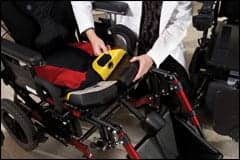A specific line of human neural stem cells shows potential for helping recover motor function in those who suffer a hemiparetic stroke. Results from the study were published recently in STEM CELLS Translational Medicine.
NSI-566 human neural stem cells were implanted adjacent to the stroke lesion in nine subjects at doses up to 72 million cells per subject, and subjects were followed for 24 months. Cells appeared to survive long-term, and patients in the single-arm trial showed improvements in motor function following cell transplantation. This indicates the procedure is safe and may have potential to provide benefit to patients with motor deficits from stroke, according to a media release from STEM CELLS Translational Medicine.
NSI-566 from Neuralstem, Inc is an epigenetically expanded line of primary human neural stem cells isolated from a single fetal spinal cord tissue. Ongoing clinical trials in the US for treating amyotrophic lateral sclerosis and spinal cord injury have provided evidence that NSI-566 can survive in patients for at least 2.5 years and may have the potential to provide clinical benefit. To date, there have been no major side effects reported.
That information prompted the research team – led by Karl K. Johe, PhD, of Neuralstem, and Ruxiang Xu, MD, of the Affiliated BaYi Brain Hospital, of Army General Hospital of PLA in Beijing — to ponder whether NSI-566 might help stroke patients, too.
Nine men and women between the ages of 30 and 65 — all had some level of hemiparesis due to stroke — were selected for the study. Eight experienced moderate impairment (they required some help but were able to walk without assistance), while the ninth was moderately severe (unable to walk without assistance and could not self-care). Subjects were given NSI-566 between five and 24 months after the time of stroke.
The patients were divided into three equal groups, with each group administered a different dose of the stem cell line. The patients were then followed for 24 months, the release explains.
“At the end of that period, we saw that transplantation of the NSI-566 cells was being well tolerated and it suggested preliminary clinical benefits. Results from imaging studies indicate new neural tissue formation in the stem cell implantation area of all nine patients,” Xu notes.
Johe adds that, “The results suggest that grafted NSI-566 continue to survive in the stroke lesion long after cessation of immunosuppressant, and that the potential clinical effects persist throughout the 24-month observation period. Although this was a small, one-arm study of feasibility, the results are encouraging to warrant further studies.”
[Source(s): STEM CELLS Translational Medicine, PRWeb]




